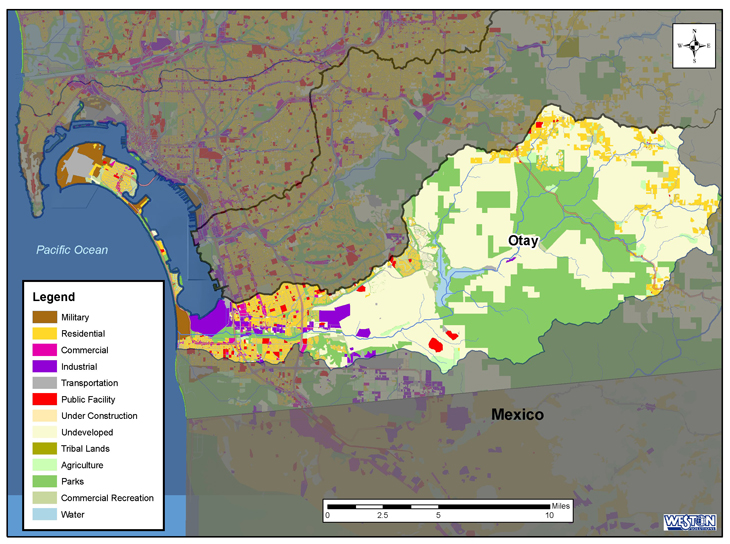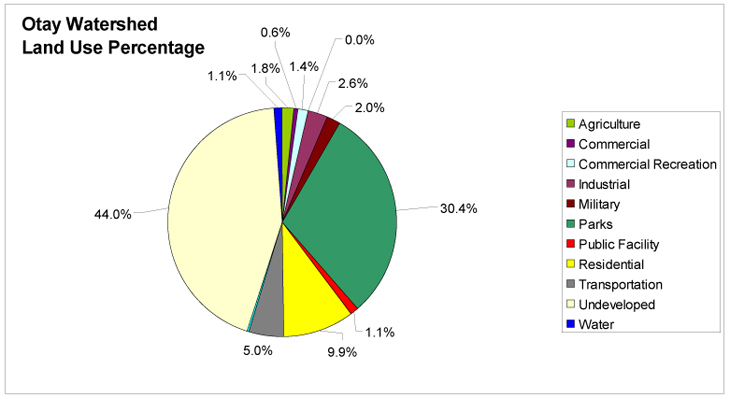
****JavaScript web menu drop down DHTML menu generated by NavStudio. (OpenCube Inc. - http://www.opencube.com)****
|
||||||||||||||||||||
THE OTAY WATERSHED (HU 910.00)
The Otay watershed comprises approximately 98,500 acres. It consists of three hydrologic areas: Coronado, Otay, and Dulzura. Major water bodies include the Upper and Lower Otay Reservoirs, Otay River, and San Diego Bay . Nearly 70 percent of the watershed is unincorporated with the remaining portions divided between the Port of San Diego, Chula Vista, Coronado, Imperial Beach, National City, and San Diego. Land ownership is predominantly private with a small percentage of local, state, and federally owned lands. The Otay watershed is one of the least populated watersheds in the San Diego Region with approximately 143,000 people. That number is expected to increase by nearly 90 percent by the year 2015. Land use in the watershed is primarily vacant/undeveloped (44%), parks and recreation (30%), and residential (10%).
The Otay watershed provides many beneficial uses with conservation areas that include the San Diego National Wildlife Refuge, the Rancho Jamul Ecological Reserve, and approximately 23,000 acres that provide habitat for endangered plant and animal species as part of the Multiple Species Conservation Plan (Table 5). The two major reservoirs in the watershed supply water, important wildlife habitat, and recreational opportunities. The Lower Otay Reservoir lies at the end of the San Diego Aqueduct. The San Diego Formation is the principal aquifer in the watershed. Table 6 shows the water body that has been placed on the CWA 303(d) list. Annual rainfall varies from 8.25 inches at the coast to 19.5 inches in the inland areas. Most of the runoff from this watershed is collected at the Otay Reservoir. The reservoir only releases water during extremely large rain events and thus no flow was recorded during the 2001-2002 monitoring season; subsequently, this station was decommissioned after that season. TABLE 1: Beneficial uses within the Otay WatershedTABLE 2: Water bodies on the SWRCB 303(d) list in the Otay Watershed
|
||||||||||||||||||||

